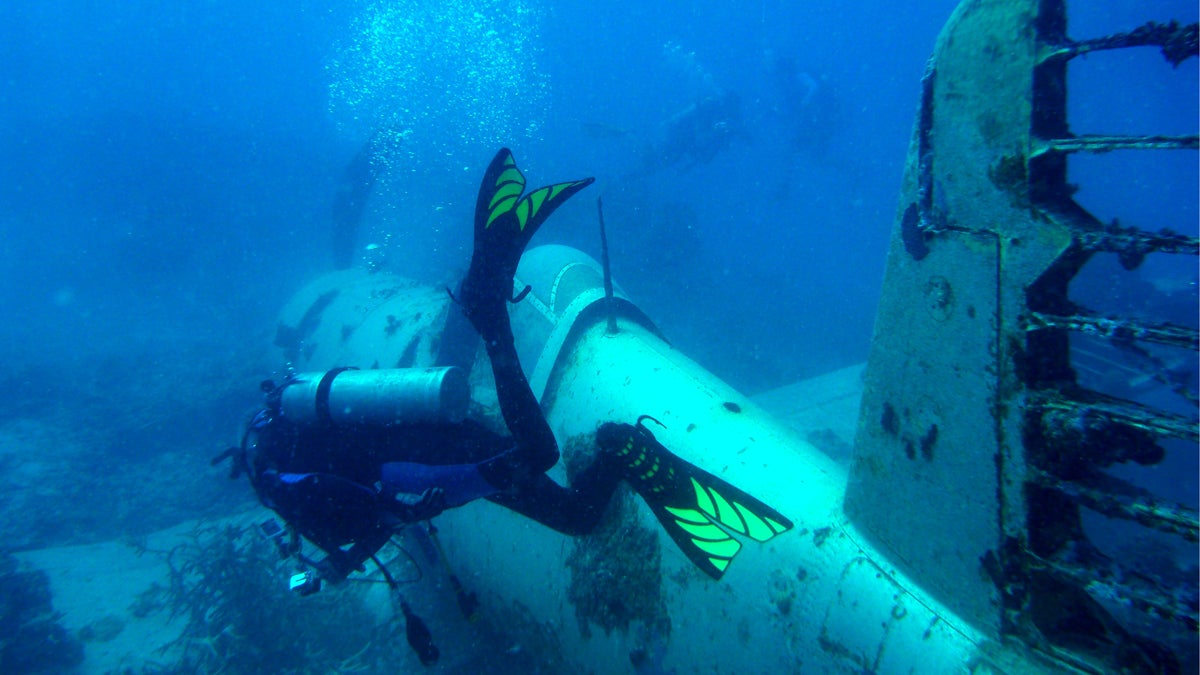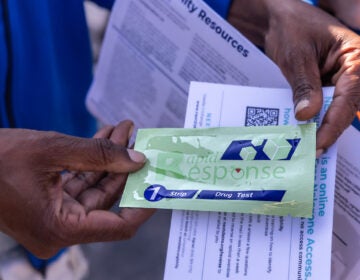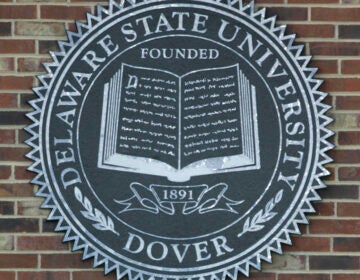University of Delaware scientist helps locate two WWII planes lost at sea
Listen
A diver swims beside one of the plane. (Mark Moline/University of Delaware)
As a marine biologist with the University of Delaware, Mark Moline has investigated the shovelnose guitarfish and bioluminescent plankton in the Arctic. But in a quest that has become very personal, he has also lent his scientific expertise to a team looking for downed World War II planes in the Pacific.
Two years ago, Moline and a colleague from the Scripps Institution of Oceanography, Eric Terrill, were measuring water flow around the western Pacific Islands of Palau.
They ran into BentProp, a nonprofit looking for lost World War II airmen, and realized their advanced underwater vehicles could help in the search.
Moline began using torpedo-shaped robots, equipped with sonar, to scour the sea floor.
“It’s hard, because coral reef environments show the same types of signals that a plane wreckage would underwater,” he said. “But by stitching all the different paths together, you can actually get a debris field, and that is a signature for an aircraft wreck.”
In the first season, the team failed to identify any planes with missing in action servicemen. But in March, their perseverance paid off. The group located two American planes — a TBM Avenger and a single-seat F6F Hellcat — 70 years after they were shot down by the Japanese.
After dedicating so much time to the project — including hours of digging through historical archives to focus their hunt — Moline said he had mixed emotions.
“It’s a feeling of excitement because you found what you were looking for,” he said. “But also, there’s a solemnness, that these people went through a horrific few minutes while the plane was going down.”
The process hit even closer to home for Moline because he had recently been given his grandfather’s journal, penned in part while he was a Navy chaplain stationed on a ship in Palau.
The team believes the wrecks harbor three pilots who had been listed as MIA. The group submitted information on their find to the U.S. military, which is responsible for returning any remains to family members.
In the meantime, Moline has started preparing for his next trip to Palau in the spring. Along with a scientific mission, he plans to investigate more underwater resting places where other fallen heroes may lie.
WHYY is your source for fact-based, in-depth journalism and information. As a nonprofit organization, we rely on financial support from readers like you. Please give today.




